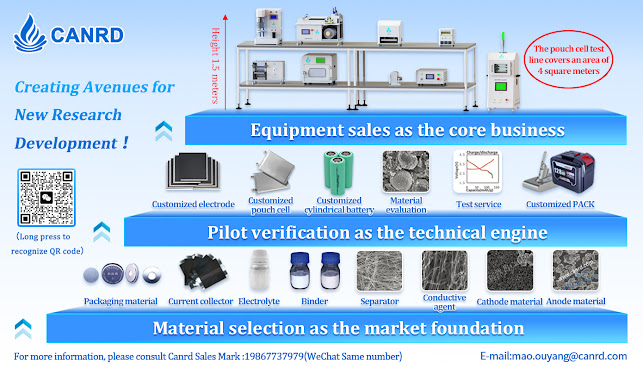Analysis of Lithium Battery Injection Process
Usually, the diaphragm is composed of porous hydrophilic materials with relatively large porosity, while the electrode is composed of porous media composed of various particles. It is generally believed that the electrolyte penetrates faster in the diaphragm than in the electrode. Therefore, the flow process of the electrolyte should be to first penetrate into the diaphragm and then penetrate into the electrode through the diaphragm, as shown in Fig.1
Fig.1 Schematic diagram of electrolyte soaking battery cell
In the electrode, a larger cavity is formed between three or four large active material particles, and the cavities are connected by narrow channels between two parallel particles. The electrolyte first converges in the cavity and then diffuses to the nearby throat. Therefore, the wetting rate of the electrolyte is mainly controlled by the throat between the connected cavities and the cavity volume. As shown in Fig.2, the α cavity is composed of four particles and is connected to the surrounding cavities through four throats, and the β cavity is composed of three particles and is connected to the surrounding cavities through three throats.
Fig.2 Schematic diagram of the electrode cavity structure
As shown in Figure 3, the mechanism of electrolyte diffusion in the electrode pores can be seen as the interaction between three forces: the pressure Fl from the electrolyte flow, the capillary force due to the surface tension Fs, and the resistance Fg caused by the air in the pores. When injecting liquid, evacuating the battery can reduce the resistance caused by the air, while pressurizing the electrolyte injection can increase the driving force for liquid flow. Therefore, vacuum-pressurized injection is conducive to the infiltration of the electrolyte.
Fig.3 Schematic diagram of electrolyte diffusion dynamics in pores
The capillary motion of the electrolyte can be described by the Washburn equation:
h is the liquid penetration height at time t, r is the capillary radius, γlv is the liquid-gas surface tension, ϑ is the contact angle, Δρ is the density difference, and η is the viscosity. It can be seen that the viscosity of the electrolyte, the wetting contact angle with the electrode, the surface tension and other characteristics will affect the wetting process.
Electrolyte infiltration is the process of driving air out of the electrode pores. Due to the random distribution of the size and shape of the pore structure, the electrolyte infiltration rate is often different, which causes air to gather near the current collector, surrounded by electrolyte, and trapped in the electrode. The electrolyte infiltration saturation is always less than 1. Almost all large voids are filled with electrolyte, but there are small voids in many places. Small voids represent residual air surrounded by solid particles. Therefore, how to minimize this residual air is the key to improving the degree of infiltration.
Canrd Brief Introduce
Canrd use high battery R&D technology(core members are from CATL) and strong Chinese supply chain to help many foreign companies with fast R&D. We provide lab materials,electrodes, custom dry cells, material evaluation, perfomance and test, coin/pouch/cylindrical cell equipment line, and other R&D services.
Email:janice@canrd.com
Phone/Wechat/WhatsApp/Skype:+86 18928276992
Website : www.canrud.com
.webp)
.webp)
.webp)










No comments:
Post a Comment